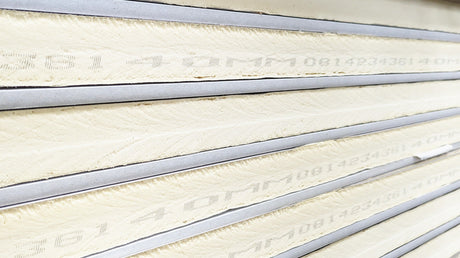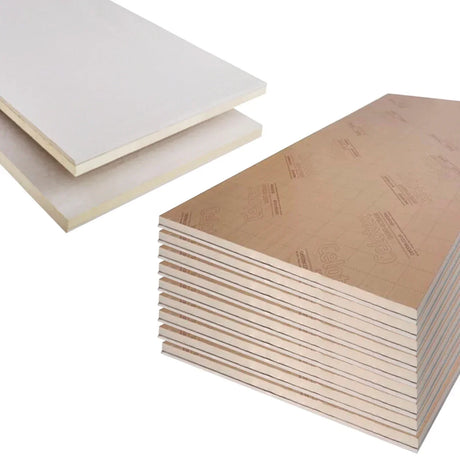Distinguishing between Medium Density Fibreboard (MDF) and particle board (commonly called chipboard in the UK) helps ensure appropriate material selection for specific applications. While both represent engineered wood products manufactured from processed timber materials bonded with resins under heat and pressure, several distinctive characteristics allow reliable identification even for those without specialist knowledge.
Edge appearance provides perhaps the most immediate and definitive identification method. Examine a clean-cut edge or break a small corner sample if permitted. MDF displays a uniform, fine-textured surface throughout its thickness, with a smooth, almost felted appearance showing no visible distinct particles. The consistent light brown coloration throughout reveals its manufacture from finely processed wood fibres creating a homogeneous structure. By contrast, particle board/chipboard edges clearly display individual wood particles of varying sizes, typically with finer material on the surface layers and larger particles in the core. This distinctive layered construction with visible wood chips creates an unmistakable appearance once you've observed the difference. Standard flooring-grade chipboard (P5) typically shows this particle structure with a characteristic greenish tinge from added moisture-resistant resins, making identification particularly straightforward for common flooring materials.
Surface texture reveals subtle but identifiable differences even on factory-finished faces. MDF provides exceptionally smooth, uniform surfaces without the slight texture sometimes detectable on chipboard. Run your hand across uncoated edges or surfaces – MDF feels consistently smooth with a slightly waxy or burnished quality, while chipboard may present minute surface variations reflecting its composite particle structure. This difference becomes particularly noticeable when painting, as MDF typically requires less preparation to achieve smooth finishes, while chipboard may need additional sealing or surfacing to mask its slightly more textured nature. For faced products like melamine-coated boards, this difference becomes less apparent on the surfaces but remains clearly visible at edges or fixing penetrations.
Density and weight characteristics offer tangible differentiation when handling these materials. Standard MDF typically weighs 700-720 kg/m³, feeling noticeably heavier than equivalent-thickness chipboard at 620-680 kg/m³. This creates approximately 10% weight difference between materials of the same dimensions – a distinction readily apparent when handling larger panels. Lift corners of comparable sheets; MDF demonstrably requires more effort, with the weight difference becoming more pronounced as sheet size increases. This density difference also manifests in physical handling properties, with MDF exhibiting less flexibility across unsupported spans compared to equivalent thickness chipboard, which demonstrates slightly more flex under similar conditions.
Cutting and machining behaviour reveals clear material differences valuable for identification. When sawing these materials, MDF produces very fine, almost powder-like dust, while chipboard creates coarser dust with visible small particle components. During machining operations like drilling or routing, MDF cuts cleanly with minimal splintering at edges, while chipboard frequently shows more edge disruption around cut lines with occasional particle separation, particularly around drilled holes. The homogeneous structure of MDF allows cleaner machining particularly evident when creating shaped edges or profiles. This machining behaviour provides reliable identification opportunities during working processes, with the distinctive fine MDF dust creating unmistakable evidence of material type.
Screw and fixing behaviour offers another practical identification method. When driving screws into each material, MDF typically offers smooth, consistent resistance throughout insertion, with minimal surface disruption around the entry point when appropriate pilot holes are used. Chipboard often demonstrates slightly more variable resistance during screw insertion, with some compression occurring around fixing points and greater tendency for raised material around screw heads without proper countersinking. More tellingly, when screws are positioned near edges, MDF maintains edge integrity with minimal splitting, while chipboard edges show higher susceptibility to breakout or splitting unless appropriate edge distances are maintained. This fixing behaviour creates clear material identification opportunities during installation processes.
Water resistance testing provides definitive identification through controlled exposure. If permitted to conduct a simple test, apply a small water droplet to an inconspicuous edge or unseen surface area. MDF rapidly absorbs moisture, showing pronounced swelling around the water exposure within minutes. Standard chipboard, particularly moisture-resistant flooring grades, demonstrates significantly better water resistance, with slower absorption and less pronounced swelling. After drying, MDF typically retains more noticeable deformation from even brief moisture exposure. This simple test provides conclusive identification, though obviously remains suitable only for materials where minor test damage in inconspicuous areas proves acceptable.
Manufacturing edge markings frequently provide direct identification for professional grade materials. Examine board edges for printed or stamped information – UK manufacturers typically include material type, performance grade, and production information along panel edges. Flooring-grade chipboard commonly displays "P5" moisture-resistant designation or "P7" for heavy-duty structural variants, while MDF panels often show grade markings like "MDF" or "MR MDF" for moisture-resistant types. These edge markings provide definitive identification when present, though may be absent on cut panels or budget materials. This identification method proves particularly reliable for new, uninstalled materials where complete edges remain accessible for inspection.
Flame and burn characteristics reveal different material compositions when small samples can be safely tested. Under controlled conditions with appropriate safety measures, applying flame to small samples shows MDF burning with relatively consistent flame spread reflecting its uniform composition. Chipboard demonstrates more variable burning patterns corresponding to its differentiated particle structure, often with more intense combustion around resin concentrations between larger particles. More practically, the distinctive odour during drilling or cutting provides identification hints – MDF typically produces a characteristic slightly sweet smell from its finer fibres and higher resin percentage, while chipboard creates a more woody, traditional sawdust aroma. These sensory differences provide supplementary identification evidence supporting visual assessment.
Environmental certification markings sometimes indicate material type through specific sustainability schemes. In the UK market, chipboard frequently carries Forest Stewardship Council (FSC) or Programme for the Endorsement of Forest Certification (PEFC) markings, as its manufacturing process more commonly incorporates recycled wood content complying with these certification requirements. MDF, while increasingly available with similar certifications, historically showed different certification patterns. While not definitively diagnostic, these environmental markings provide supporting evidence when combined with other identification characteristics, particularly for complete panels with original labelling intact.
Price point differences in retail environments often separate these materials, with MDF typically commanding 15-25% premium over equivalent-dimension chipboard depending on specific grades and thicknesses. In builder's merchants or timber suppliers with clear product labelling, this price differentiation provides initial guidance, though requiring confirmation through physical characteristics for definitive identification. The price difference reflects both manufacturing process variations and performance characteristics making each material better suited for specific applications, with the cost premium generally corresponding to enhanced performance properties for particular uses rather than universal superiority.
At DIY Building Supplies, we provide clearly labelled, high-quality MDF and chipboard products with comprehensive technical information ensuring confident material selection. Our knowledgeable staff can assist with identification of existing materials when bringing samples for matching, ensuring appropriate selections for your specific project requirements.









